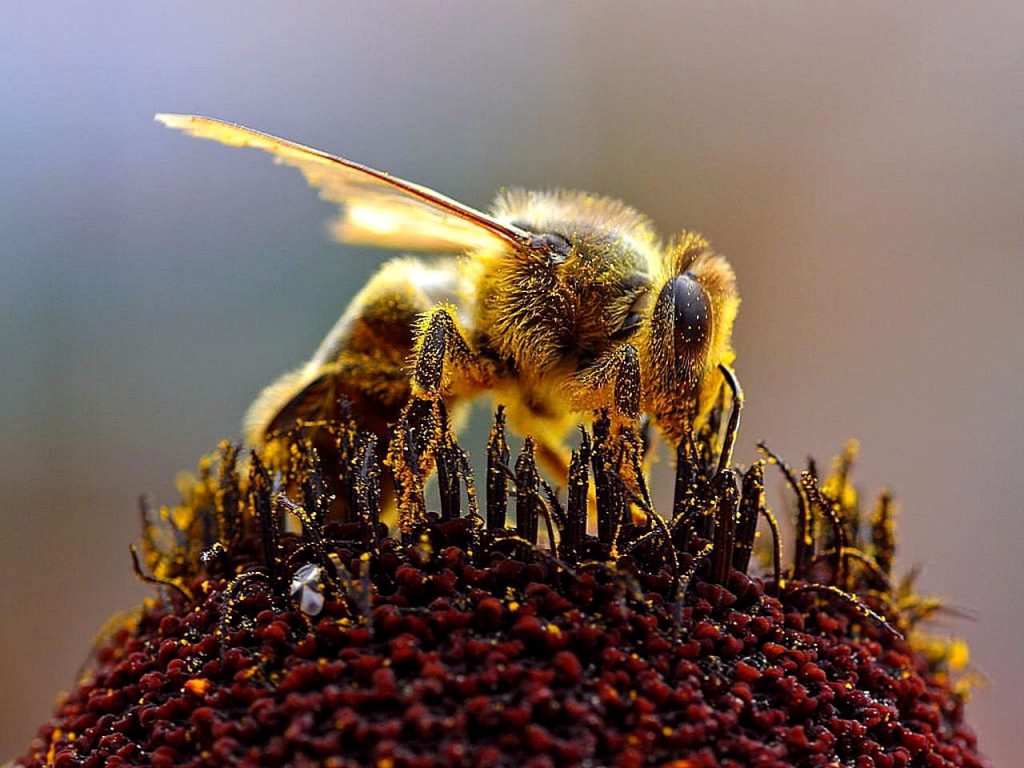May 20 is World Bee Day. It is a world-wide celebration of what has been declared the single most important animal on earth. It’s staggering to think of what they do for us and the planet. Around 70% of the world’s agriculture depends exclusively on bees for pollination and this doesn’t even cover what they do for wild plants and our ecosystem as a whole. Somehow though, these amazing, invaluable insects are declining.

Let’s take one day to think about bees. One day, not to fear them or think they’re annoying, but to observe them and really notice them? When most people think of bees, they think of two things: Honey and Sting. In reality, there are around 20,000 species of bees worldwide, most of them are solitary, don’t make honey, and would be very unlikely to sting. If you find that surprising, here are some other amazing facts about bees!
- A worker honey bee is a very hard worker! She can visit up to 10,000 flowers each day and travels around 36,000 miles in her short lifetime.
- Only female bees can sting. Their sting is part of their ovipositor, a female reproductive organ that is responsible for egg laying. They don’t want to sting you as stinging can mean death for a worker honeybee, or serious confrontation for a female solitary bee, which she can’t afford. If you notice a bee, give them space and they will leave you alone. If they land on you, be calm and wait for them to move on. They don’t want any trouble, they might just find you attractive!
- The most common bees in the Northern Hemisphere are the Halictidae, or sweat bees. They are small and often mistaken for wasps or flies.
- 20% of bees gather no pollen; instead they sneak their eggs into other bee’s nests. These are known as cuckoo bees!
- The majority of all bee species nest in the ground.
- Honey bees are not capable of pollinating some flowers, like blueberry blossoms. Only bumblebees and blueberry bees can do this through a process called buzz pollination, which honey bees cannot do. A productive Southern blueberry bee will visit as many as 50,000 flowers in its lifetime, resulting in around 6,000 blueberries.
- It takes at least 21 visits from bees to produce one fully developed strawberry!
- Anyone can help bees, no matter your age, race, socioeconomic status, or location. Even if you only have room for one window box, you can feed bees with flowers!

Bees are not too different than you or me. They leave home every day to go to work, flying from flower to flower. They gather nectar and pollen for the same reason we go to work, to provide for their families. The difference is that in doing so, they ensure there will be habitat and food for countless other animals, completing a crucial link in the food chain that can never be replaced. Even if you miss World Bee Day, take a day to really think about bees, big ones, little ones, fuzzy ones, bare ones, solitary and social ones! Think about what you can do to help bees care for their families because we could not care for ours without them.
Visit the pollinator garden at HMNS Sugar Land to find out more about bees, butterflies and other pollinators!
Want to plant your own pollinator garden? Check this blog out to learn how.






